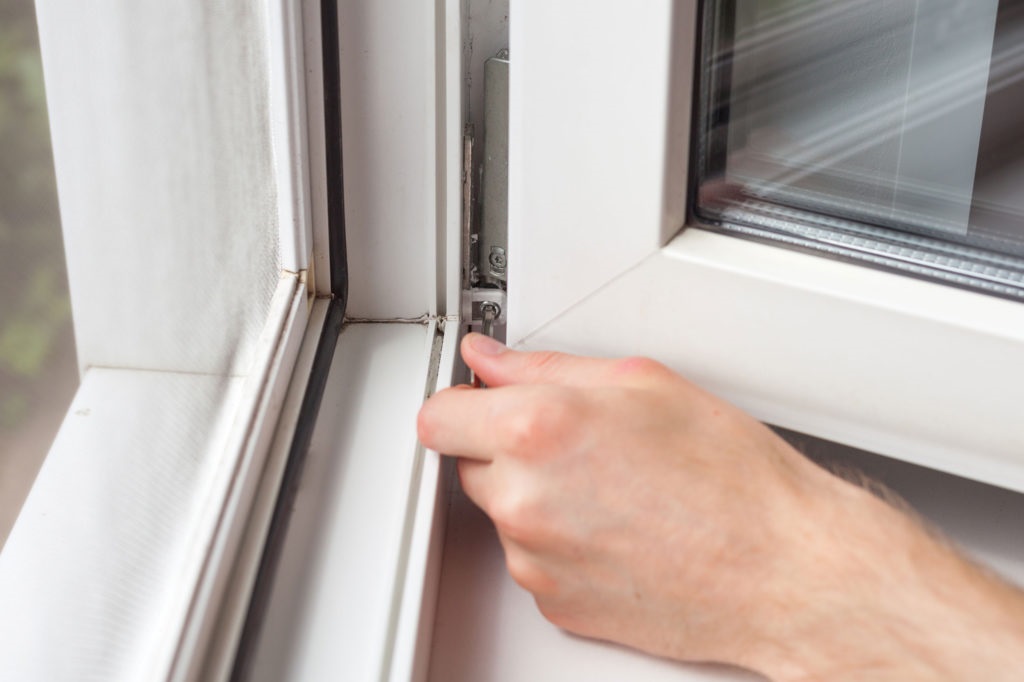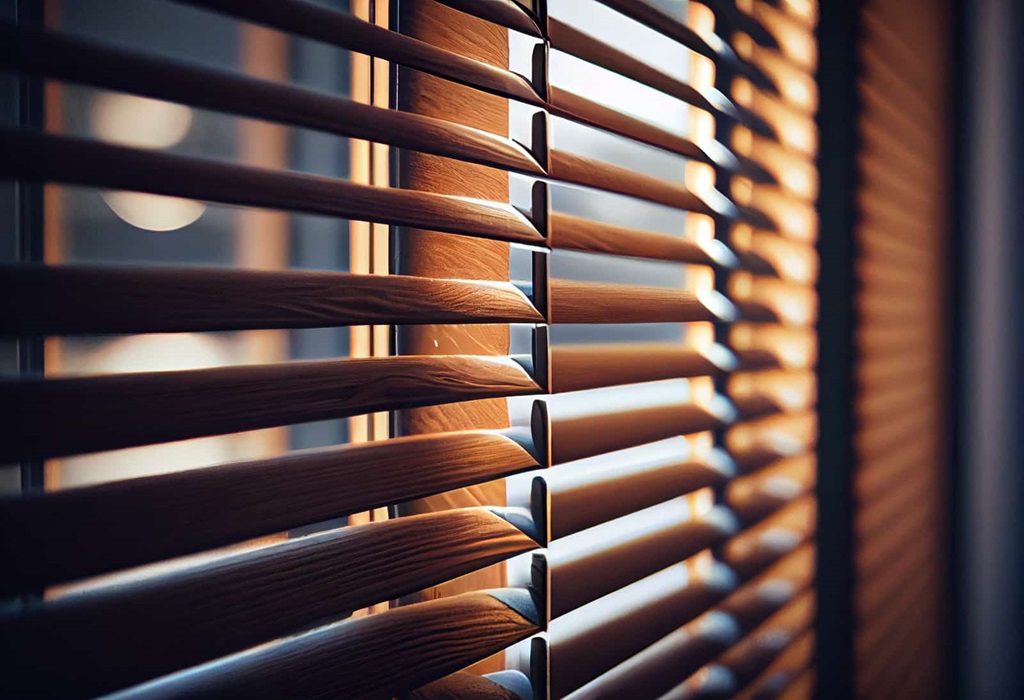Having a window that won’t stay open can be incredibly frustrating. As you try to let some fresh air in or air out of a room, the window keeps falling closed. Or maybe you’ve opened a window to enjoy a nice breeze, only to have it slam shut unexpectedly. A window that won’t stay up on its own can disrupt your day and leave you wondering what’s wrong.
Don’t worry – with some troubleshooting and a few potential repairs, you can likely get your stubborn window working properly again. Here, we’ll explore the most common reasons why a window won’t stay open and provide solutions to fix the issue for good. Read on to determine why your window is misbehaving and get it fixed so you can finally open and enjoy your windows with peace of mind.
Common Causes of Windows That Won’t Stay Open
There are several potential culprits when a window won’t remain open on its own:
Worn-out or Broken Window Sash Cords
Window sash cords are ropes or chains within the window frame that help counterbalance the weight of the window sash (the moving part of the window). Over time, these cords can wear out or break. When this happens, the sash cords no longer hold the weight of the window, allowing the sash to fall down. Broken or detached sash cords are one of the most common reasons windows won’t stay open.
Broken, Disconnected, or Missing Window Hardware
Window hardware like hinges, friction adjusters, sash locks, and pulleys can become damaged or disconnected over time. This hardware helps the window stay in place when open. If any crucial window hardware components are broken, disconnected, or missing, the window can have difficulty staying up when opened.
Window Frame is Out of Square
If the window frame is not perfectly square, it can make the window sash unstable and unlikely to stay in position when open. A frame out of the square usually occurs because of the shifting and settling of the house. It prevents the sash from seating properly in the frame.
Moisture or Paint Buildup
Over time, moisture, paint, or other debris can cause a sticking, binding effect between the window sash and frame. This added friction makes it hard for the sash to move smoothly and stay open on its own.
No Window Stops
Window stops are small blocks attached to the window frame to prevent the sash from sliding up or down when open. If window stops are missing or improperly installed, the sash has nothing stopping it from falling down.
Troubleshooting a Window That Won’t Stay Open

Now that you know the most common culprits, here are tips for troubleshooting and determining exactly why your window won’t stay open:
Inspect the Window Sash Cords
Look for any broken or detached sash cords – this is one of the most likely reasons your window won’t stay open. The cords are located in the side channels within the window frame. Look for any frayed, broken, or unattached cords.
If the cords look intact, gently pull down on the bottom of the window sash while opening. If the sash feels heavier than normal and wants to fall quickly, the cords could still be worn out and not counterbalancing properly even if they aren’t fully broken.
Check the Window Hardware
Examine the hinges, pulleys, friction adjusters, sash locks, and any other hardware around the window. Look for anything loose, damaged, or missing. Move any adjustable hardware back and forth – it should move smoothly without excessive play.
Try opening the window and shaking it gently from side to side. If you feel any looseness in the joints, it likely means the hardware needs to be tightened or replaced.
Test if the Window Frame is Out of Square
Have someone help you fully open the window sash and hold it in place. Using a tape measure, measure the width at the top, middle, and bottom of the frame from the inside edge to the outside edge – the measurements should be consistent.
Then measure the height from top to bottom on the left and right sides – these measurements should match as well. Any major inconsistencies likely mean the frame is out of square and needs realignment.
Check for Binding and Friction
Open the window sash and run your fingers along the edges where the sash meets the frame. Check for any sticking, binding points, or built-up debris like paint or caulk that could cause friction.
If the window feels extra tough to open and close as well, this indicates potential friction issues. Applying lubricant along binding spots can help diagnose if this is the culprit.
Look for Missing Window Stops
Window stops are typically located near the top of the window frame or along the vertical side channels. Inspect whether stops are present and properly secured in place. Missing or loose stops will allow the sash to slide down when opened.
By systematically checking all the above troubleshooting steps, you should be able to determine what needs adjusting or repairing to get your stubborn window to stay open properly.
Repair Solutions for a Window That Won’t Stay Up
Once you’ve troubleshooted the issue, here are ways to fix the problem for good:
Replace Broken or Worn Sash Cords
If your sash cords are broken or detached, they will need full replacement to get your window working again. Removing old cords involves taking off interior trim, accessing cord pulleys, detaching any old cord remnants, and threading new cords through the pulleys. Installing proper length new sash cords fully counterbalances the sash weight and allows the window to stay open.
For worn-out cords that haven’t fully broken, a replacement can still improve function and extend the window’s life. Take time to measure your current cords and purchase replacement cords of the same length and thickness.
Replacing sash cords requires some dexterity and DIY skills, but with patience, proper instructions, and materials, it can be a doable home project. If not feeling up to the task, hiring a handyman is recommended.
Repair or Replace Damaged Window Hardware
Any loose, disconnected, or broken window hardware like hinges or friction adjusters will need to be properly resecured, repaired, or replaced altogether. Examine each component and determine if simply tightening screws and joints is enough, or if full replacement is required.
When replacing parts like friction adjusters or pulleys, take the old part to the hardware store to find accurate replicas. Try to match the size, style, and installation method as closely as possible for proper functionality. Carefully follow manufacturer instructions when installing any new window hardware components.
Square and Realign the Window Frame
A window frame out of the square usually requires dismantling, squaring up, and reinstalling the frame properly back into the wall. This involves cutting away any interior trim, removing nails and screws to take the frame unit out, using levels and wood shims to square and realign the frame, sealing any gaps with caulk, and re-anchoring the frame securely into the wall.
It’s a process best left to a skilled carpenter or window installation professional. They have the expertise to fully realign and secure the frame back into place. Expect to pay several hundred dollars for this repair.
Clean Debris and Lubricate Binding Points
Built-up dirt, paint, or other debris in the window track can often be cleared away with some elbow grease and basic cleaning solutions. Use a vacuum, towel, scraper, and mineral spirits to gently clear away anything sticking in the sash channels.
Use cotton swabs or a thin stick to reach tight crevices. Be very careful not to further scrape or damage the wood. Any remaining stickiness usually responds well to dry lubricants like graphite powder worked into the tracks. Rubbing a candle or bar of soap along binding points also helps reduce friction.
Add New or Replacement Window Stops
If window stops are missing, installing new ones will help control how far the sash opens and prevent it from falling down. Take measurements of your window channel depths and sash open widths to purchase properly sized new stops. Carefully anchor the stops into the side or top window channels with short screws. Position the stops so they stop the sash before it opens wide enough to fall down.
For loose stops, tighten the screws to re-anchor them firmly in place. Add a dab of caulk around stops for extra holding power if needed. Install stops correctly and your window will stop at the perfect open position.
When to Call a Professional for Window Repair

Some window repairs involving complex construction, safety risks, or highly skilled work are best left to the professionals:
- Full sash cord replacement – This requires expertise working with cord tension and pulleys. Improper cord rethreading could damage the pulley system.
- Replacing damaged weatherstripping – Compression weatherstripping takes finesse to install without ripping or compromising the seal.
- Realigning a severely out-of-square frame – The skills of an experienced window installer are needed to properly realign and integrate the frame back into the wall.
- Replacing broken double-hung sash spring tubes – Compression springs are tricky to remove and replace properly in the window channels.
- Addressing any lead paint concerns – If your window frames have peeling or chipping lead paint, repairs require special precautions and containment methods that professionals are trained for. Do not disturb lead paint yourself.
- Replacing damaged or deteriorated window sash components – Rotted, broken, or warped sash rails, stiles or sills need skilled carpentry work and window expertise to remove and integrate replacement parts properly.
- Replacing broken glass panes – The old glass must be carefully removed and replaced with glass properly cut to size. Maneuvering large panes into the rails and glazing the glass also requires experience.
- Repairing stuck double-hung windows – Freeing stuck sashes from the frames calls for nimble work removing sashes, reglazing, and adjusting alignment.
For any complex window issues involving your home’s structure and safety, hire a licensed and insured window repair professional. They have the expertise to complete repairs properly and get your windows functioning correctly again.
5 Tips to Prevent Future Window Problems
To avoid continuing issues with windows that won’t stay open, keep these maintenance tips in mind:
- Lubricate moving parts 2-3 times per year – Keep hinges, pulleys, and sash channels lightly lubricated with powdered graphite or silicone spray lube to prevent binding and friction buildup.
- Inspect weatherstripping and caulking annually – Look for gaps or deterioration and re-caulk or replace weatherstripping promptly to prevent air and moisture from getting in.
- Clean tracks and hardware regularly – Use a vacuum and compressed air to keep debris from accumulating and interfering with smooth operation.
- Watch for signs of moisture damage – Warped wood, mold, or chipping paint can indicate moisture problems requiring professional repair before further damage occurs.
- Have windows professionally serviced every 2-5 years – Routine professional maintenance helps spot minor issues before they become major repairs.
Conclusion

Dealing with a window that refuses to stay open can be highly inconvenient, but is usually repairable. Carefully inspecting the window components and troubleshooting the issue can reveal what needs adjustment or replacement. Many repairs like replacing worn sash cords, lubricating tracks, and replacing hardware are doable DIY projects. More complex repairs require calling in a window professional to get your window working properly again. With the right diagnosis and repairs, you can once again open your windows with confidence. Implementing preventative maintenance will help your windows function smoothly for years to come.
FAQs
1. Why does my double-hung window fall down when opened?
The most common reasons are broken sash cords no longer counterbalancing the window, missing or inadequate window stops, and worn-out springs in double-hung windows. Each of these components helps keep the sash up when opened.
2. How do I know if my window sash cords need to be replaced?
Signs include frayed, broken, or detached cords, and sashes that feel heavier and want to fall quickly when opened. Replacement is recommended if cords are 10+ years old.
3. What if lubricating the track doesn’t fix sticking and binding?
The window may need to be removed, sanded, stripped of old paint, and properly reglazed into the frame. Moisture damage or house settling could also cause binding issues.
4. Why does my window slide down slightly even with stops installed?
If set too low, stops may need adjustment higher or window channels may need realignment. Increased friction over time can also allow the sash to slide below stops.
5. Should I replace just the broken sash cord or all the cords?
It’s best to replace all the cords at once since the remaining cords are likely worn too and could break soon. Prevent future problems by replacing all cords together.



